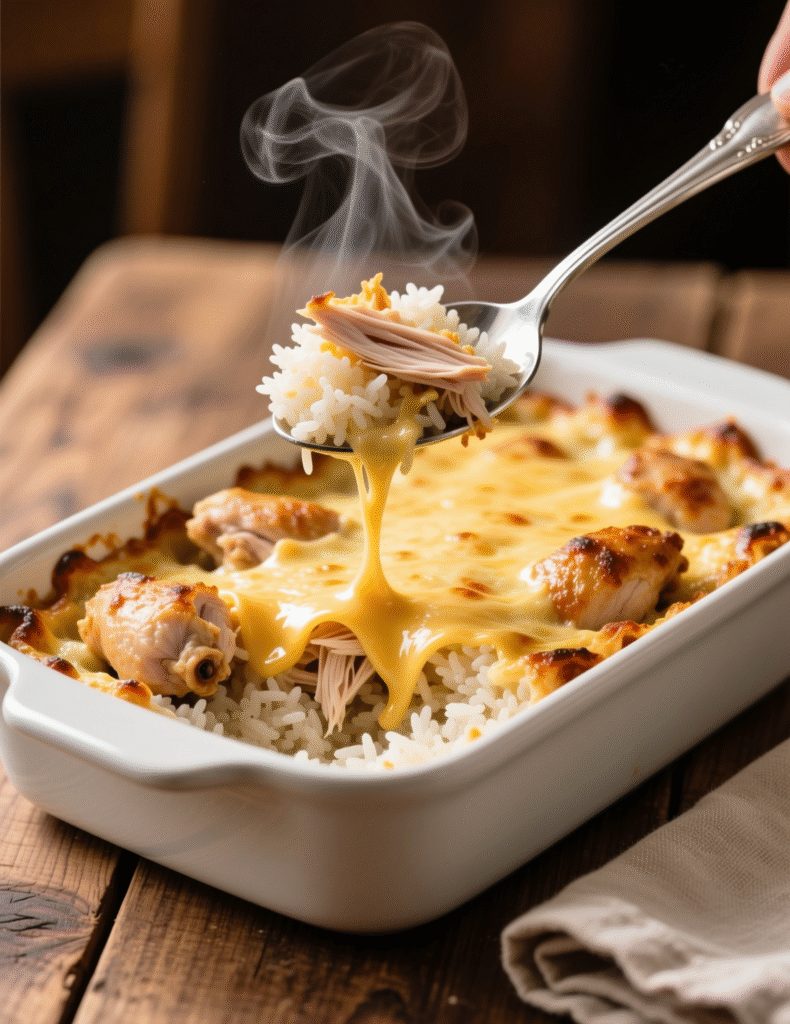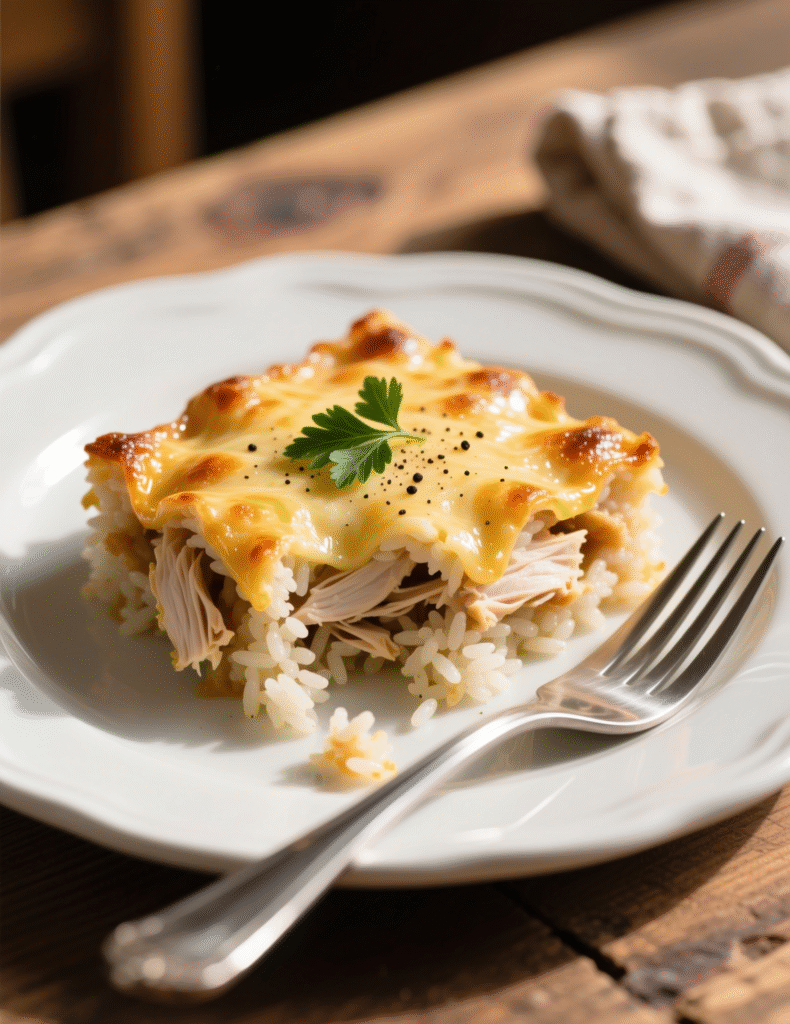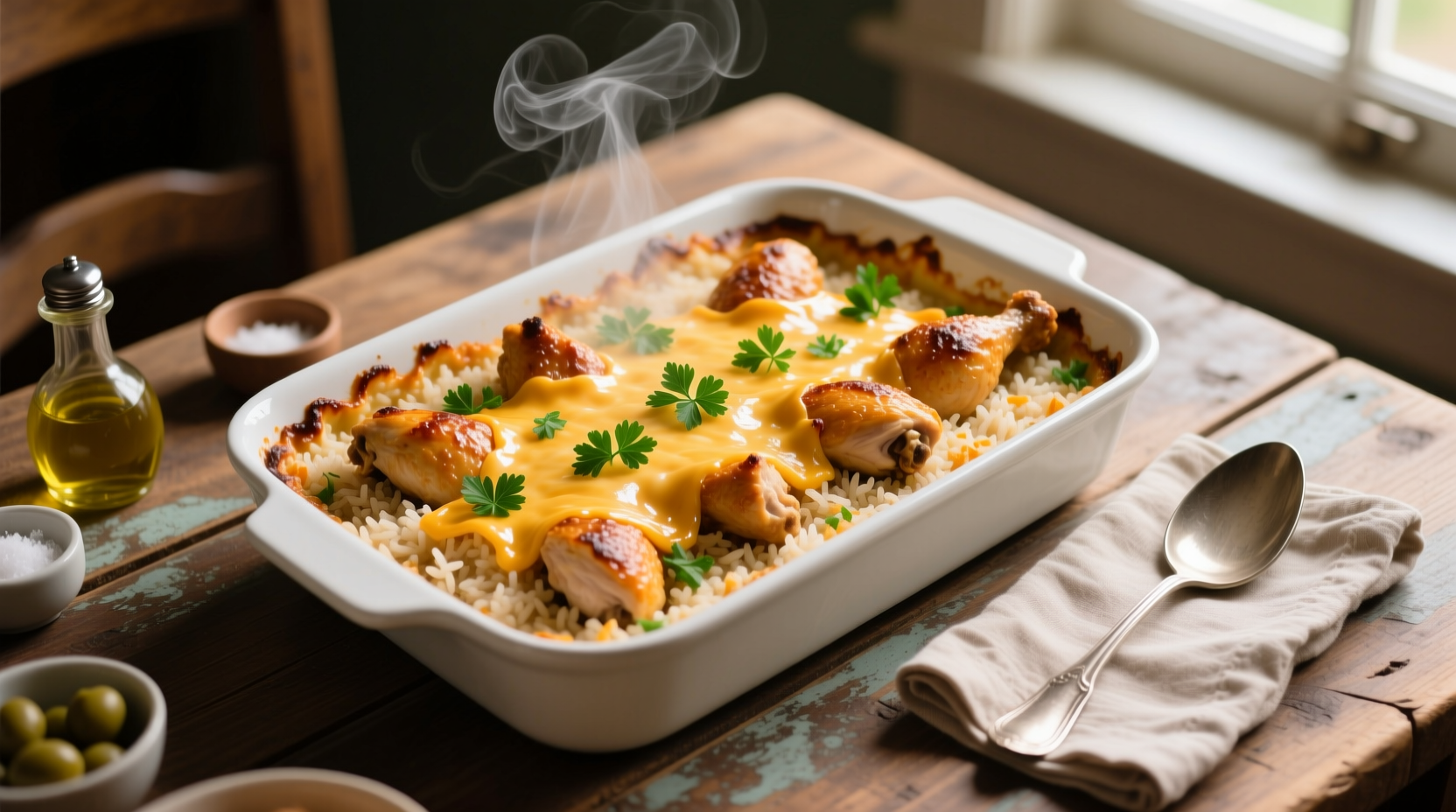There’s something about chicken and rice baked together that never really goes out of style. People have been layering these two simple ingredients for centuries, from Middle Eastern pilafs to Spanish arroz al horno. The casserole version, though, carries a unique identity. It’s not just food—it’s comfort baked into a dish. And when done right, this humble recipe can stand shoulder to shoulder with more elaborate meals.
This article dives deep into the professional side of cooking chicken and rice casserole. We’ll explore technique, flavor science, ingredient balance, and how to scale or adjust the recipe for different contexts. If you’re a chef, caterer, or culinary student, consider this more than a recipe—it’s a framework to refine, adapt, and master.
Why Chicken and Rice Casserole Endures
At its core, the dish embodies efficiency. Protein, starch, and fat all live in harmony in one vessel. Families love it because it stretches ingredients, professionals love it because it scales without losing quality.
Historically, casseroles gained prominence during the mid-20th century in the US, when home cooks embraced oven-based, one-dish meals. Yet, the idea is older—layered rice and meats appear in Persian tahdig, Indian biryanis, and French gratins. The casserole is simply an Americanized evolution of a universal idea: put good things together, let the oven do the heavy lifting, and share at the table.
The Professional’s Blueprint: Ingredients
For six servings, the base recipe usually reads straightforward. But professionals know, small tweaks shift everything.
- Chicken: 2 pounds bone-in thighs or breasts. Thighs provide more flavor, breasts leaner bite. Always skin-on if you want fat rendered into the rice.
- Rice: 2 cups long-grain white rice. Basmati for fragrance, jasmine for soft texture. Avoid short-grain unless you want stickiness.
- Liquid: 4 cups stock (chicken or vegetable). Homemade stock wins every time—higher collagen, deeper flavor. Store-bought often lacks body.
- Vegetables: Onion, garlic, carrots, celery. A mirepoix forms the aromatic base. Mushrooms add umami, bell peppers bring sweetness.
- Dairy (optional): 1 cup cream or condensed soup base. This is where American casseroles diverged. Professionals may prefer béchamel or velouté instead of condensed cans.
- Seasoning: Paprika, thyme, black pepper, and a restrained hand with salt. Casseroles concentrate flavors, so seasoning control matters.
- Cheese (optional): Sharp cheddar or Gruyère, grated over top for crust and richness.
When planning a service for six, these proportions give hearty portions without excess.

Technique: Building Flavor in Layers
A rookie mistake is throwing raw ingredients into a pan and hoping the oven will “sort it out.” It rarely does. Professionals know the difference lies in pre-treatment.
Start by browning chicken. A golden crust adds Maillard complexity that translates into the rice. Remove chicken, then sauté onions, garlic, and carrots in the same pan. This pulls fond from the base—free flavor, not to be wasted. Deglaze with a splash of white wine or stock before adding rice. Toast rice briefly until it smells nutty. This prevents mushiness and primes it for even cooking.
Layering is key. Rice goes at the bottom, absorbing juices. Vegetables mingle through. Chicken rests above, skin exposed so it roasts, not steams. Liquid added last, simmering just at the edge before the oven step.
Bake covered at 350°F for 40 minutes, uncover for another 15–20 to crisp the surface. Professionals often finish with a salamander to tighten the crust.
Nutritional Perspective
One serving of chicken and rice casserole (based on this recipe, no extra cream) averages:
- Calories: 480–520
- Protein: 32g
- Carbs: 46g
- Fat: 18g
From a dietary planning standpoint, this dish balances macronutrients well. It sits squarely in the range of a complete meal without additional sides. Yet, it’s adaptable: swap white rice for brown to raise fiber, use skinless chicken to reduce fat, or add legumes to boost plant-based protein.
Common Missteps and Fixes
- Mushy Rice: Usually from excess liquid or wrong rice variety. Always measure accurately, and don’t rinse basmati too aggressively—it loses structure.
- Dry Chicken: Overbaking breasts. Solve with thighs, or brine chicken beforehand. A simple 5% salt solution for 2 hours transforms texture.
- Flat Flavor: Not enough browning, not enough acid. Lemon juice at the end, or a splash of vinegar, rescues richness.
- Greasy Top: Skin left unrendered. Always sear skin-side down first to release fat before baking.
Variations Professionals Experiment With
- Mediterranean: Add olives, sun-dried tomatoes, oregano, and a touch of cinnamon.
- Asian-inspired: Use jasmine rice, soy sauce in broth, ginger, and sesame oil. Garnish with scallions.
- Latin: Incorporate cumin, chili powder, black beans, and corn. Top with queso fresco.
- Luxury twist: Substitute stock with lobster bisque, layer in wild mushrooms, finish with truffle oil.
Each variation shifts the dish from weekday staple to regional showcase.
Scaling for Service
A six-serving casserole is perfect for family or small gathering. For professional kitchens, scaling matters. Rice swells roughly 3x in volume, so trays can balloon if not calculated. Use shallow hotel pans rather than deep ones for even cooking.
Steam tables hold casserole well for service, but texture suffers after 2+ hours. To counter, chefs undercook slightly, allowing carryover heat to finish during service. A sprinkle of fresh herbs or grated cheese before plating revives presentation.

Case Study: Casserole in Catering
A Boston-based catering company reported chicken and rice casserole as their second-highest requested dish for corporate lunches in 2023. Why? Portability and cost control. Their version leaned Mediterranean, with lemon and oregano, costing $1.82 per portion in bulk. Compare this to salmon entrées averaging $4.60 per portion, and the math becomes obvious.
In restaurant settings, casseroles rarely appear as headliners but often as family-style sides. Yet, the same flavor techniques apply—controlled layering, balanced seasoning, efficient baking.
Emerging Trends
The casserole has seen a quiet resurgence. Driven by comfort-food nostalgia, it’s appearing in modernized menus. Restaurants in New York and LA now serve “deconstructed chicken and rice casserole,” essentially a re-styled plating with identical core elements.
Plant-based versions are gaining traction too. Seitan or jackfruit replace chicken, cashew cream stands in for dairy. While traditionalists may frown, customer demand makes it impossible to ignore. The market for comfort food with a health-conscious spin is projected to grow 8% annually in the next five years.
Expert Tips for Professionals
- Always par-cook denser vegetables like carrots or potatoes before adding. Raw density won’t match rice’s cooking timeline.
- A thin butter breadcrumb topping adds crunch without overwhelming flavor. Keep layers balanced.
- Rest casserole for 10 minutes before serving. Rice finishes absorbing liquid, preventing a soupy plate.
- Use oven thermometers. Kitchen ovens often run 15–20°F off. Precision saves batches.
A Chef’s Perspective
Cooking this dish feels almost meditative. The patience of browning chicken, the aroma of rice absorbing stock, the quiet hum of the oven—it’s less about speed, more about trust. In professional kitchens, trust in technique is everything. You set the stage, close the door, and wait for flavors to marry in silence.
That’s why casseroles endure. They reward patience with depth. They’re simple, yes, but also a stage for mastery.
Conclusion
The chicken and rice casserole is deceptively simple but endlessly adaptable. For professionals, it’s not just about following ratios—it’s about layering flavor, controlling texture, and anticipating service realities. Whether for six at home or sixty at an event, the same principles apply: respect the rice, treat the chicken with care, and let the oven do its quiet magic.
If you approach it with intention, this dish ceases to be just another casserole. It becomes proof that even humble ingredients, treated with expertise, can transform into something unforgettable.
FAQs
What type of chicken is best for chicken and rice casserole?
Bone-in thighs are best for flavor, while breasts work for leaner results.
Can I use brown rice instead of white?
Yes, but increase liquid and baking time since brown rice cooks slower.
How do I prevent mushy rice in casserole?
Toast rice first and measure liquid precisely to keep grains firm.
Is it necessary to sear the chicken before baking?
Yes, searing adds flavor and prevents greasy skin.
Can I make chicken and rice casserole ahead of time?
Yes, assemble in advance, refrigerate, then bake just before serving.
What cheese works well for topping?
Sharp cheddar or Gruyère create the best crust and depth.
How many servings does this recipe yield?
The base recipe provides six hearty servings.
Can this casserole be frozen?
Yes, freeze after baking, then reheat covered in the oven.
What vegetables pair best with chicken and rice casserole?
Onions, carrots, celery, mushrooms, and bell peppers all work well.
How long should I bake chicken and rice casserole?
Bake covered 40 minutes, then uncover for 15–20 minutes.

Mariana is a passionate home cook who creates delicious, easy-to-follow recipes for busy people. From energizing breakfasts to satisfying dinners and indulgent desserts, her dishes are designed to fuel both your body and hustle.
When she’s not in the kitchen, she’s exploring new flavors and dreaming up her next recipe to share with the Foodie Hustle community.

